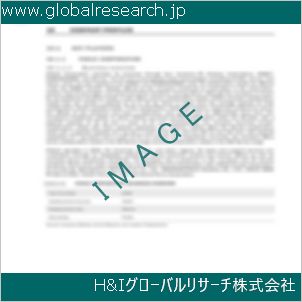Table of Contents
1 Industry Overview of Fluorine
1.1 Definition and Specifications of Fluorine
1.1.1 Definition of Fluorine
1.1.2 Specifications of Fluorine
1.2 Classification of Fluorine
1.3 Applications of Fluorine
1.3.1 Nuclear Application
1.3.2 Non-Nuclear Application
1.4 Industry Chain Structure of Fluorine
1.5 Industry Overview and Major Regions Status of Fluorine
1.5.1 Industry Overview of Fluorine
1.5.2 Global Major Regions Status of Fluorine
1.6 Industry Policy Analysis of Fluorine
1.7 Industry News Analysis of Fluorine
2 Manufacturing Cost Structure Analysis of Fluorine
2.1 Raw Material Suppliers and Price Analysis of Fluorine
2.2 Equipment Suppliers and Price Analysis of Fluorine
2.3 Labor Cost Analysis of Fluorine
2.4 Other Costs Analysis of Fluorine
2.5 Manufacturing Cost Structure Analysis of Fluorine
2.6 Manufacturing Process Analysis of Fluorine
3 Technical Data and Manufacturing Plants Analysis of Fluorine
3.1 Capacity and Commercial Production Date of Global Fluorine Major Manufacturers in 2023
3.2 Manufacturing Plants Distribution of Global Fluorine Major Manufacturers in 2023
3.3 R&D Status and Technology Source of Global Fluorine Major Manufacturers in 2023
3.4 Raw Materials Sources Analysis of Global Fluorine Major Manufacturers in 2023
4 Capacity, Production and Revenue Analysis of Fluorine by Regions, Types and Manufacturers
4.1 Global Capacity, Production and Revenue of Fluorine by Regions 2019-2024
4.2 Global and Major Regions Capacity, Production, Revenue and Growth Rate of Fluorine 2019-2024
4.3 Global Capacity, Production and Revenue of Fluorine by Types 2019-2024
4.4 Global Capacity, Production and Revenue of Fluorine by Manufacturers 2019-2024
5 Price, Cost, Gross and Gross Margin Analysis of Fluorine by Regions, Types and Manufacturers
5.1 Price, Cost, Gross and Gross Margin Analysis of Fluorine by Regions 2019-2024
5.2 Price, Cost, Gross and Gross Margin Analysis of Fluorine by Types 2019-2024
5.3 Price, Cost, Gross and Gross Margin Analysis of Fluorine by Manufacturers 2019-2024
6 Consumption Volume, Consumption Value and Sale Price Analysis of Fluorine by Regions, Types and Applications
6.1 Global Consumption Volume and Consumption Value of Fluorine by Regions 2019-2024
6.2 Global and Major Regions Consumption Volume, Consumption Value and Growth Rate of Fluorine 2019-2024
6.3 Global Consumption Volume and Consumption Value of Fluorine by Types 2019-2024
6.4 Global Consumption Volume and Consumption Value of Fluorine by Applications 2019-2024
6.5 Sale Price of Fluorine by Regions 2019-2024
6.6 Sale Price of Fluorine by Types 2019-2024
6.7 Sale Price of Fluorine by Applications 2019-2024
6.8 Market Share Analysis of Fluorine by Different Sale Price Levels
7 Supply, Import, Export and Consumption Analysis of Fluorine
7.1 Supply, Consumption and Gap of Fluorine 2019-2024
7.2 Global Capacity, Production, Price, Cost, Revenue, Supply, Import, Export and Consumption of Fluorine 2019-2024
7.3 USA Capacity, Production, Price, Cost, Revenue, Supply, Import, Export and Consumption of Fluorine 2019-2024
7.4 EU Capacity, Production, Price, Cost, Revenue, Supply, Import, Export and Consumption of Fluorine 2019-2024
7.5 China Capacity, Production, Price, Cost, Revenue, Supply, Import, Export and Consumption of Fluorine 2019-2024
7.6 Japan Capacity, Production, Price, Cost, Revenue, Supply, Import, Export and Consumption of Fluorine 2019-2024
8 Major Manufacturers Analysis of Fluorine
8.1 Manufacturer One
8.1.1 Company Profile
8.1.2 Product Picture and Specifications
8.1.2.1 Type I
8.1.2.2 Type II
8.1.2.3 Type III
8.1.3 Capacity, Production, Price, Cost, Gross and Revenue
8.1.4 Contact Information
8.2 Manufacturer Two
8.2.1 Company Profile
8.2.2 Product Picture and Specifications
8.2.2.1 Type I
8.2.2.2 Type II
8.2.2.3 Type III
8.2.3 Capacity, Production, Price, Cost, Gross and Revenue
8.2.4 Contact Information
8.3 Manufacturer Three
8.3.1 Company Profile
8.3.2 Product Picture and Specifications
8.3.2.1 Type I
8.3.2.2 Type II
8.3.2.3 Type III
8.3.3 Capacity, Production, Price, Cost, Gross and Revenue
8.3.4 Contact Information
8.4 Manufacturer Four
8.4.1 Company Profile
8.4.2 Product Picture and Specifications
8.4.2.1 Type I
8.4.2.2 Type II
8.4.2.3 Type III
8.4.3 Capacity, Production, Price, Cost, Gross and Revenue
8.4.4 Contact Information
8.5 Manufacturer Five
8.5.1 Company Profile
8.5.2 Product Picture and Specifications
8.5.2.1 Type I
8.5.2.2 Type II
8.5.2.3 Type III
8.5.3 Capacity, Production, Price, Cost, Gross and Revenue
8.5.4 Contact Information
…
9 Marketing Trader or Distributor Analysis of Fluorine
9.1 Marketing Channels Status of Fluorine
9.2 Traders or Distributors with Contact Information of Fluorine by Regions
9.3 Ex-work Price, Channel Price and End Buyer Price Analysis of Fluorine
9.4 Regional Import, Export and Trade Analysis of Fluorine
10 Industry Chain Analysis of Fluorine
10.1 Upstream Major Raw Materials Suppliers Analysis of Fluorine
10.1.1 Major Raw Materials Suppliers with Contact Information Analysis of Fluorine
10.1.2 Major Raw Materials Suppliers with Supply Volume Analysis of Fluorine by Regions
10.2 Upstream Major Equipment Suppliers Analysis of Fluorine
10.2.1 Major Equipment Suppliers with Contact Information Analysis of Fluorine
10.2.2 Major Equipment Suppliers with Product Pictures Analysis of Fluorine by Regions
10.3 Downstream Major Consumers Analysis of Fluorine
10.3.1 Major Consumers with Contact Information Analysis of Fluorine
10.3.2 Major Consumers with Consumption Volume Analysis of Fluorine by Regions
10.4 Supply Chain Relationship Analysis of Fluorine
11 Development Trend of Analysis of Fluorine
11.1 Capacity, Production and Revenue Forecast of Fluorine by Regions and Types
11.1.1 Global Capacity, Production and Revenue of Fluorine by Regions 2024-2029
11.1.2 Global and Major Regions Capacity, Production, Revenue and Growth Rate of Fluorine 2024-2029
11.1.3 Global Capacity, Production and Revenue of Fluorine by Types 2024-2029
11.2 Consumption Volume and Consumption Value Forecast of Fluorine by Regions, Types and Applications
11.2.1 Global Consumption Volume and Consumption Value of Fluorine by Regions 2024-2029
11.2.2 Global and Major Regions Consumption Volume, Consumption Value and Growth Rate of Fluorine 2024-2029
11.2.3 Global Consumption Volume and Consumption Value of Fluorine by Types 2024-2029
11.2.4 Global Consumption Volume and Consumption Value of Fluorine by Applications 2024-2029
11.3 Supply, Import, Export and Consumption Forecast of Fluorine
11.3.1 Supply, Consumption and Gap of Fluorine 2024-2029
11.3.2 Global Capacity, Production, Price, Cost, Revenue, Supply, Import, Export and Consumption of Fluorine 2024-2029
11.3.3 USA Capacity, Production, Price, Cost, Revenue, Supply, Import, Export and Consumption of Fluorine 2024-2029
11.3.4 EU Capacity, Production, Price, Cost, Revenue, Supply, Import, Export and Consumption of Fluorine 2024-2029
11.3.5 China Capacity, Production, Price, Cost, Revenue, Supply, Import, Export and Consumption of Fluorine 2024-2029
11.3.6 Japan Capacity, Production, Price, Cost, Revenue, Supply, Import, Export and Consumption of Fluorine 2024-2029
12 New Project Investment Feasibility Analysis of Fluorine
12.1 New Project SWOT Analysis of Fluorine
12.2 New Project Investment Feasibility Analysis of Fluorine
13 Conclusion of the Global Fluorine (CAS 7782-41-4) Industry 2024 Market Research Report
| ※参考情報 フッ素(Fluorine)は、元素記号Fと原子番号9を持つ非金属元素で、周期表の17族に属するハロゲンの一種です。フッ素は、非常に反応性が高く、常温常圧では淡い黄色の気体として存在しています。フッ素は、地球上で最も electronegative な元素の一つであり、その強い引力により他の元素と迅速に化合します。このため、自然界ではフッ素単体としてはほとんど存在せず、主にフッ化物という形で存在しています。 フッ素の特徴としては、まずその非常に高い反応性が挙げられます。フッ素は、特に金属や非金属を含む多くの元素と反応し、フッ化物を生成します。例えば、フッ素は水素と反応してフッ化水素(HF)を生成し、ナトリウムと反応してフッ化ナトリウム(NaF)を生成します。この強い反応性は、フッ素の共有結合のエネルギーが非常に高いためであり、新たな化合物の形成を促進します。また、フッ素は、他のハロゲンと比較しても反応性が高いとされ、これはフッ素の小さい原子半径と高い電気陰性度が関与しています。 フッ素にはさまざまな同位体がありますが、最も一般的な自然同位体はフッ素-19です。フッ素-19は、安定同位体であり、フッ素の用途においても主に使用されます。他にも、フッ素の放射性同位体も存在していますが、これらは主に研究用途に限られています。 用途としては、フッ素は多岐にわたる分野で利用されております。例えば、化学工業においては、フッ化物が多くの化合物の原料として使用されます。フッ化ポリテトラフルオロエチレン(PTFE)、通称テフロンは、その優れた耐熱性、耐薬品性及び滑り性から、調理器具や防腐材料として広く利用されています。この他にも、フッ素は冷媒としても利用されており、特にフルオロカーボンは冷凍機や空調システムにおいて重要な役割を果たしています。加えて、フッ素化合物は医薬品の合成においても注目されており、特にフッ素を含む有機化合物は生物学的な活性を高めるために多くの医薬品に取り入れられています。 さらに、フッ素は歯科関連でも重要な役割を担っています。フッ化物は、虫歯を予防する効果があるとされ、歯磨き粉や洗口液に添加されることが一般的です。フッ素が歯のエナメル質に取り込まれることで、歯の再石灰化を促進し、虫歯の発生を抑える効果があります。このため、多くの国で学校や地域の水道水にフッ素を添加する政策が取られることもあります。 また、フッ素は高性能の電池材料としても注目されています。リチウムイオン電池においてフッ素化合物を用いることで、エネルギー密度や耐熱性を向上させる研究が進められています。このほか、太陽光発電の分野でもフッ素を含む材料が使用されることがあります。これにより、太陽電池の効率を向上させる試みがなされています。 フッ素の関連技術としては、フッ素化反応に関する研究や合成技術の発展があります。フッ素化反応は、高い選択性と効率を持ち、多くの有機合成において不可欠な技術となっています。このような技術の進展により、新しいフッ素化合物の合成が可能となり、それに伴って新たな応用分野の開拓が期待されます。 ただし、フッ素の取り扱いには注意が必要です。その高い反応性から、フッ素は多くの物質と激しく反応し、毒性を持つ場合もあります。特にフッ化水素は、皮膚に対する腐蝕性が強く、吸引すると深刻な健康被害を引き起こす恐れがあります。そのため、フッ素およびその化合物を扱う際は、適切な安全対策が求められます。 フッ素はその反応性の高い特性から、今後の化学、材料科学、医療分野においても新しい可能性を提供する元素として研究が進められています。フッ素化合物の合成技術や新たな用途の開発が進む中で、フッ素の役割はさらに拡大していくことが期待されます。将来的には、持続可能な材料やプロセスにおいてもフッ素の利用が重要な位置を占めるでしょう。 |
❖ 免責事項 ❖
http://www.globalresearch.jp/disclaimer

-gr.jpg)










